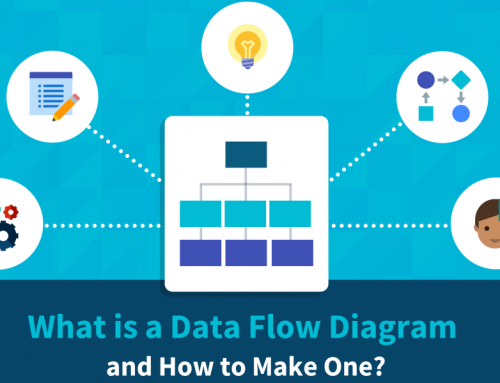What Is Metadata Repository?
A metadata repository is a database created to store metadata. Metadata is information about the structure that contains the actual data. Metadata is often thought of as “data about data”, but this is misleading. A data profile is an example of an actual “data about data”. Metadata adds a layer of abstraction to this definition – it’s data about the structure that contains the data. Metadata can describe the structure of any data on any subject stored in any format.
Well-designed metadata repositories often contain data far beyond the simple definition of various data structures. A typical repository stores tens to hundreds of different pieces of information about each data structure.

Metadata Repository
Definition of Metadata Repository:
The metadata repository is responsible for physically storing and categorizing metadata. The data in the metadata repository should be generic, integrated, current and historical.
Generic: The metamodel should store metadata in generic terms, not in application-specific defined ways. So if your database standard changes from one product to another, you don’t need to change the physical metamodel of the metadata repository. The functionality of an all-in-one metadata repository allows metadata for all business domains to be carried out in an integrated manner: covering all domains and subject areas of the organization. The metadata repository should have accessible current and historical metadata. The metadata repository used to be called the data dictionary.
As the demand for metadata usage for business intelligence has increased, so has the scope of metadata repositories. The older data dictionary is the closest thing to where technology interacts with business. The data dictionary is the entire field of the metadata repository in the initial stage, but as the scope expands, the business glossary and its tags of various state tags appearing on the business side appear on the technical side, and the consumption of technical metadata, its lineage and connections become a source of repositories, valuable reports that bring business and technology together, help make data management decisions easier, and assess the cost of change.
The metadata repository explores enterprise-wide data governance, data quality and master data management (both master and reference data) and integrates this rich information with integrated metadata across the organization to provide decision support system for data structures, even if it only reflects structures consumed from various systems.
Repository and Registry
Repositories have additional functionality compared to registries. Metadata repositories not only store metadata such as metadata registries, but also add relationships to related metadata types. The relevant metadata in the flow from entering the organization to the deliverables are considered lineage for that data point.
Metadata related to other related metadata types is called a link. By providing an architecture that relates to all metadata points in an organization and maintains its integrity for handling changes, a metadata repository provides the fundamental material for understanding the complete flow of data, its definitions, and its impact. An equally important feature is maintaining version control, although this comparison statement is up for discussion. These definitions are still in development, so the accuracy of the definitions needs to be improved.
The purpose of the registry is to define metadata elements and maintain them throughout the organization. The data model and other data management teams refer to the registry for any changes. A metadata repository pulls metadata from various metadata systems in an organization and reflects upstream content. Repositories never act as upstreams, whereas registries are used as upstreams for metadata changes.
Reasons for Using the Metadata Repository:
A metadata repository enables all structures of an organization’s data container to be integrated into one integrated location. This opens up a wealth of resource information for making calculated business decisions. The tool uses a common form of data model to integrate all models, bringing all of an organization’s applications and programs into one format.
Most importantly, applying business definitions and business processes can bring business and technology closer together, which will help organizations develop a solid roadmap with clear goals. With one-stop information, businesses will have greater control over changes and can perform impact analysis on tools.
Often, businesses spend a lot of time and money making decisions based on findings and research on impact to make changes or add new data structures or remove structures from an organization’s data management. With a well-structured and well-maintained repository, the time required to move a product from idea to delivery is minimal (considering other variables being constant).
Design a Metadata Repository
Each database management system (DBMS) and database tool has its own language for the metadata components in it. Database applications already have their own repositories or registries that are expected to provide all the necessary functionality to access the data stored in them. Vendors don’t want other companies to be able to easily migrate data from their products to competitors’ products, so they are proprietary in handling metadata. CASE tools, DBMS dictionaries, ETL tools, data cleaning tools, OLAP tools, and data mining tools all process and store metadata in different ways. Only one metadata repository can be designed to store the metadata components in all these tools.
A metadata repository should store metadata in four categories: ownership, descriptive characteristics, rules and policies, and physical characteristics. Ownership, showing data owner and application owner. Descriptive characteristics define names, types, and lengths, as well as definitions that describe business data or business processes. Rules and policies will define security, data cleanliness, data timelines and relationships. Physical characteristics define the source or origin and physical location.
Just like building a logical data model for creating a database, a logical metamodel can help identify the metadata requirements of business data. The metadata repository will be centralized, decentralized or distributed.
A centralized design means providing a database for the metadata repository that stores metadata for all applications across the business. A centralized metadata repository has the same functionality as a centralized database. It’s easier to manage since all the data is in one database, but the downside is that there can be bottlenecks.
Decentralized metadata repositories store metadata in multiple databases that are separated by location and/or business unit. This makes the management of the repository more complex compared to a centralized metadata repository, but has the advantage that metadata can be broken down into departments.
Distributed metadata repositories use a decentralized approach, but unlike decentralized metadata repositories, metadata remains in its original application.
Conclusion
Thank you for reading our article and we hope it can help you to have a better understanding of metadata repository. If you want to learn more about metadata repository, we would like to advise you to visit Gudu SQLFlow for more information. As one of the best data lineage tools available on the market today, Gudu SQLFlow can not only analyze SQL script files, obtain data lineage, and perform visual display, but also allow users to provide data lineage in CSV format and perform visual display. (Published by Ryan on Jul 2, 2022)
2 Comments
Leave A Comment
If you enjoy reading this, then, please explore our other articles below:




[…] extensible master data repository with flexible data modeling capabilities provides a centralized view of all relationships between […]
[…] stores or data repositories are used in data flow diagrams to represent situations in which the system must retain data because […]